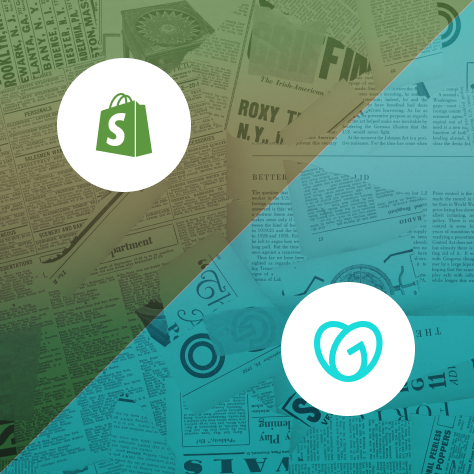How To Implement Custom Product Fields In Shopify (2025)
Shopify is flexible, but not everything is built into the platform by default. For many merchants, the standard product setup—title, description, price, and variants—is not always enough.
Some stores require extra product information or want to collect details from customers before checkout. This might include a monogram, a custom message, or even a file upload.
These types of product customizations are made possible by using custom product fields in Shopify. Understanding how they work is the first step to implementing them correctly.
What Are Custom Product Fields In Shopify?
Custom product fields are additional inputs that extend your product data beyond Shopify's default fields. They come in two main types:
- Backend fields: These live in the Shopify admin and help merchants store extra product details like technical specs, ingredients, or care instructions. These are typically added using Shopify metafields.
- Frontend fields: These appear on the product page for customers to interact with. Examples include text boxes for engraving messages, dropdown menus for selecting options, or file uploads for providing images.
A jewelry store might use a text field for customers to enter initials for engraving. A furniture brand could add a dropdown for selecting wood finish. These fields create more tailored shopping experiences and provide context for complex products.
The key difference is who uses them—merchants use backend fields to enrich product data, while customers use frontend fields to provide input during shopping.
How To Use Shopify Metafields For Unique Data
Metafields are Shopify's built-in system for storing custom data. They've become much easier to use with Shopify's updated interface in 2025.
To create a metafield definition:
- Go to Settings > Custom data > Products in your Shopify admin
- Click "Add definition"
- Enter a name (like "Fabric Type")
- Choose a content type (text, number, file, etc.)
- Set a namespace and key (e.g.),
custom.fabric_type
Once created, you can add values to individual products by:
- Going to the product editor
- Scrolling to the Metafields section
- Entering values for each field
For multiple products, use the bulk editor or export/import a CSV file with metafield columns.
To display metafields on your storefront, you have three options:
With Online Store 2.0 themes, you can add metafields through the theme editor without code. For custom placement, you can use Liquid code in your product template:
{{ product.metafields.custom.fabric_type }}How To Collect Customer Input With Line Item Properties
While metafields store information for display, line item properties collect information from customers. These properties attach to items in the cart and follow them through checkout.
To add a text input field for customer information:
<input type="text" name="properties[Engraving]" placeholder="Enter your engraving text">For a dropdown menu:
<select name="properties[Size Option]"> <option value="Small">Small</option> <option value="Medium">Medium</option> <option value="Large">Large</option></select>These fields must be placed inside the product form element that contains the add-to-cart button. When a customer submits the form, their input becomes attached to that specific product in their cart.
To display these properties in the cart, add this code to your cart template:
{% for p in item.properties %} {% unless p.last == blank %} <p><strong>{{ p.first }}:</strong> {{ p.last }}</p> {% endunless %}{% endfor %}After checkout, you'll find customer inputs in the order details in your Shopify admin. This information can guide fulfillment, like printing custom text on a product or including special packaging.
Adding Custom Fields In Your Theme Code
For more control over custom fields, you can modify your theme code. This approach works well when you need specific layouts or functionality that pre-built solutions don't offer.
First, create a new product template:1. Go to Online Store > Themes > Customize > Theme actions > Edit code2. In the Templates folder, add a new template named "product.custom-fields"
Next, find the product form in your section file (usually main-product.liquid) and add your custom field code:
<div class="custom-field"> <label for="engraving">Engraving Text</label> <input id="engraving" type="text" name="properties[Engraving Text]"></div>The key part is using properties[] in the name attribute. This tells Shopify to store the value as a line item property. Product recommendations increase purchase rates by 70% and improve average order value by 33%, creating substantial revenue gains for merchants.
To make fields required, add the required attribute to the input tag. For validation, you can add simple JavaScript. Additionally, 70% of retailers investing in personalization see at least 400% ROI on their investments, making it one of the highest-yield e-commerce strategies.
document.querySelector('form[action="/cart/add"]').addEventListener('submit', function(e) { var engraving = document.getElementById('engraving'); if (engraving.value.trim() === '') { e.preventDefault(); alert('Please enter engraving text.'); }});Finally, assign your custom template to products by:
- Opening a product in Shopify admin
- Selecting "product.custom-fields" from the Theme template dropdown
- Saving the changes
For multiple products, use the bulk editor to apply the template to many products at once.
When To Use Shopify Apps For Custom Fields
Sometimes built-in tools aren't enough for complex customization needs. Shopify apps can help when you need:
- Conditional logic: Showing or hiding fields based on other selections
- File uploads: Letting customers attach images or documents
- Price adjustments: Changing the product price based on selections
- Advanced formatting: Creating visually complex option layouts
Popular apps for custom fields include:
- Infinite Options: Flexible field types with conditional logic at an affordable price
- Product Options & Customizer: Visual builder with image swatches and price add-ons
- Bold Product Options: Advanced logic with inventory tracking for larger catalogs
When choosing an app, consider how it works with your checkout flow and other apps. Some apps may not be compatible with certain checkout customizations or third-party tools.
Most custom field apps offer no-code builders that let you create and manage fields without touching theme files. This can save time and reduce the risk of breaking your theme.
Managing Multiple Custom Fields Across Products
For stores with many products, managing custom fields one by one isn't practical. Instead, use these approaches:
- Bulk editing tools: Shopify's built-in bulk editor lets you update multiple products at once. Select products, click "Bulk edit," and add columns for your metafields.
- CSV import/export: Export your products as a CSV file, add metafield columns, and import the updated file. Metafield columns use the format Metafield: namespace.key.
- Metafield apps: Tools like Metafields Guru or Matrixify make bulk management easier with filtering, templates, and scheduled updates.
For better organization:
- Use consistent naming: Keep namespace and key names simple and consistent
- Group related fields: Use the same namespace for related information
- Document your structure: Keep track of which fields exist and how they're used
This organization helps when your product catalog grows or when new team members need to understand your setup.
Keeping Your Store Fast With Custom Fields
Adding many custom fields can slow down your store if not implemented carefully. Here are key considerations:
- Image optimization: Compress images and limit file sizes for uploads (aim for under 2MB)
- Minimize API calls: Too many dynamic fields can increase the number of API requests
- Use conditional loading: Only show fields that are relevant to the current product
- Test on mobile: Custom fields should work well on smaller screens too
After adding custom fields, test your store's performance using tools like Google PageSpeed Insights or GTmetrix. Check load times on both desktop and mobile devices.
The goal is to balance functionality with speed. Custom fields add value, but too many can create a sluggish experience that frustrates customers.
Making The Most Of Custom Product Fields
Custom product fields transform standard Shopify stores into personalized shopping experiences. When implemented thoughtfully, they can:
- Let customers create products that match their exact needs
- Provide additional information that helps customers make decisions
- Collect information that makes fulfillment more accurate
Shopify continues to improve its custom field capabilities. Recent updates include new metafield types and better theme editor integration, making it easier to add and display custom data without code.
Custom fields can directly impact your store's performance by increasing conversion rates and average order value. Personalized products often command higher prices and create stronger customer connections.
Platter's theme and app solutions simplify the implementation of custom fields. Our approach focuses on making these advanced features accessible without requiring development expertise.
To explore how Platter can help optimize your Shopify storefront with custom fields, book a demo.
Frequently Asked Questions About Shopify Custom Product Fields
How do I make custom fields required for customers to complete?
Add the required attribute to the input element in your HTML code. For additional validation, include JavaScript that checks the input when the form is submitted and prevents submission if the field is empty.
Can I use custom fields to change product pricing dynamically?
Yes. Use JavaScript to detect customer selections from custom fields and update the displayed product price. The script must adjust the price visually and pass the correct total to the cart using line item properties.
Do custom fields work with Shopify's checkout customization?
Custom field data entered on product pages passes to checkout as line item properties. This information can be displayed during checkout using Shopify's checkout extensibility features or apps like Platter+.
How do I display different custom fields for different product types?
I'm sorry, it seems there was a mistake, and I don't have the paragraph to update. Could you please provide the paragraph again?






-min.webp)




.webp)



















.svg)


.svg)











.png)

%201.png)



.svg)
.svg)
